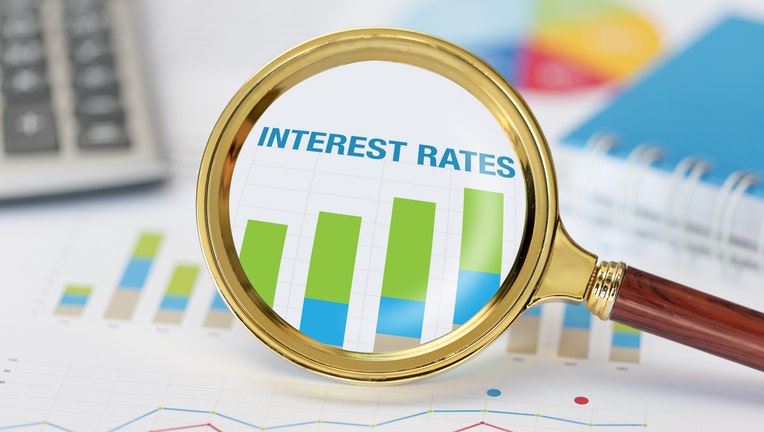3 secrets to getting the best student loan interest rates

Looking for student loans for next semester? Here’s how to shop around and get the best rate.
With a new college semester coming to a close and a new one fast approaching, many students are on the lookout for additional student loans to help cover the costs of their education.
Comparison-shopping is critical in this process — especially for those who want to minimize their interest rate and get the best repayment terms and options available.
Rate-shopping marketplaces like Credible can ease this process. It’s important to know how to evaluate the loan offers you receive on sites like these — especially as they pertain to interest rates.
Are you shopping around for student loans for the 2020 fall semester? Here’s what you need to know where comparing loan offers and student loan interest rates.
1. Know the difference between "variable" and "fixed"
There are two types of interest rates you’ll likely see quotes for: variable (sometimes called “adjustable”) and fixed. With fixed interest rates, your rate is set for the entirety of your loan term. So, if you’re offered a 7 percent rate on a 10-year loan, you’ll pay 7 percent interest on your balance every year for the next 10 years.
Variable rates, on the other hand, are not set in stone. They’re tied to an index rate, and as that rate changes (based on economic and market conditions), the rate on your loan can change, too, sending it up or down — and your monthly payment along with it. Because of this, your payments and interest costs will fluctuate with a variable-rate loan. This makes it a riskier loan choice overall.
FIXED-RATE OR VARIABLE LOAN OPTIONS: WHICH IS BEST FOR YOU?
For these reasons, you can’t make an apples-to-apples comparison of fixed- and variable-rate loans. A low fixed rate is not the same as a low variable rate, because it may not remain at that low level for very long. With any variable-rate loan, it’s important to know when your rate can change, as well as how high it can go at any given point. Most lenders have a feature called “rate caps” to protect you from sky-high jumps in rates.
HOW TO FIND THE BEST STUDENT LOANS (AND GET THE LOWEST RATES)
2. Have a handle on your credit score
Having a good handle on your credit is vital before seeking student loan quotes. Not only will you need to provide this information when filling out some applications, but it can also give you a good idea of what sort of rates and terms you qualify for.
Generally, the best rates are reserved for those with super-prime credit scores — or those with a 740 or above. If you are confident in your credit score, then you consider moving forward by using Credible to see what kind of personalized rates you are eligible for.
8 OF THE BEST PRIVATE STUDENT LOANS IN 2020
If you’re looking at advertised rates or considering rate quotes that did not require your credit score (or at least an estimation of it), then you can usually assume you’re seeing super-prime rates. If your score is below super-prime level, you can expect your actual interest rate to be lower once the lender runs a full credit check, which is required on almost all loan applications.
If your credit score isn’t great, you’re not without options — nor are you destined for high rates. You just may need a higher-credit cosigner to take out the loan with you.
Cosigners are common with student loans. In fact, about 90 percent of all private student loans have a cosigner. Bringing one in can help you qualify for more loan options, as well as secure better interest rates on those loans (and save you money in the long run).
3. Read the fine print
Interest rates are only one of the many factors you should look at when considering a student loan offer.
In addition to the interest rate a loan comes with, you’ll also need to assess its:
Term: How many years or months is the loan for? How long will you be paying for it after graduation?
Repayment policy: When are you required to start repaying the loan? Is there a grace period while in school? Are there forbearance and deferral options if you find yourself facing financial hardship?
Fees: Are there any application or origination fees? Will you be penalized for late payments?
Low-interest rates may often come with unfavorable terms and fees in order to offset those reduced earnings for the lender. That’s why it’s important to look at the entire picture — rates, fees, and terms included — when shopping for a student loan (or even when refinancing one).
Fortunately, tools like Credible can make evaluating these loan factors easy. You can get customized rates based on your credit profile, as well as details on your expected loan amount, monthly payment, repayment terms, and more, all with one single form.
STUDENT LOAN REFINANCING RATES GOING DOWN - HERE'S WHY
And remember: if you haven’t yet looked to federal student loans, start there. These charge less interest and often do not require a cosigner. Just fill out a FAFSA at StudentAid.gov to get started.

